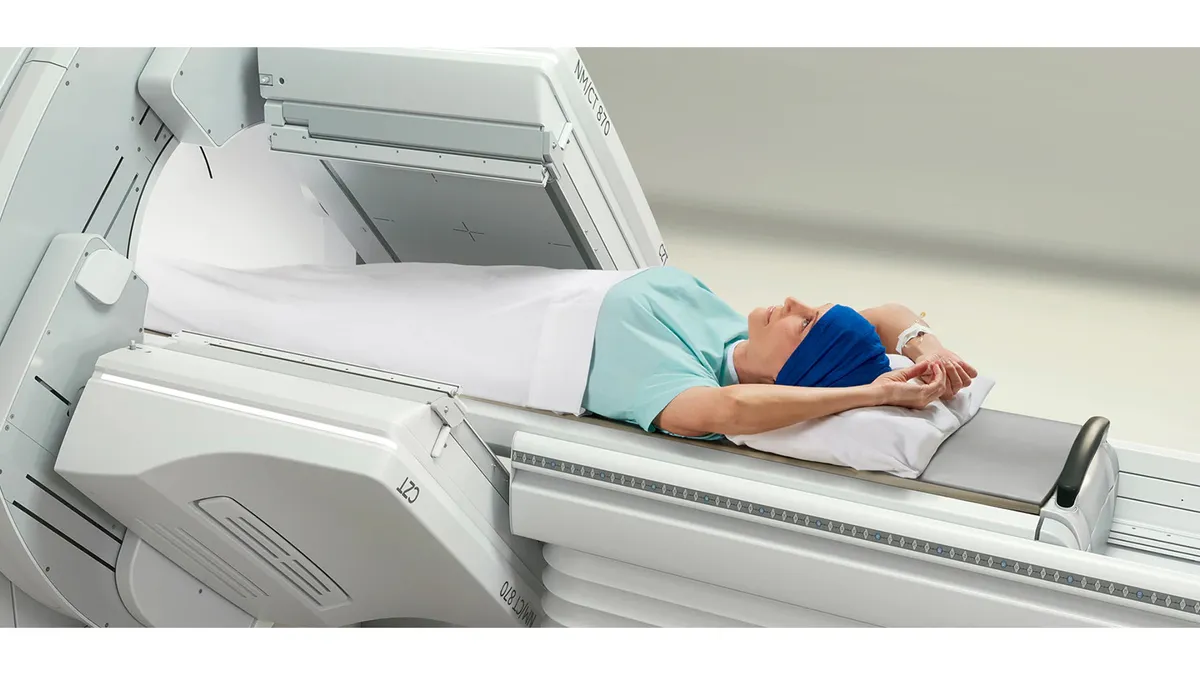Dive Brief:
- A fault that could cause a 1,212-pound detector in the imaging device to fall and crush the patient has triggered a Class I recall by GE HealthCare.
- The fault affects GE Nuclear Medicine 600 and 800 Series systems that generate images to assess organ function and detect diseases. GE HealthCare contacted users of the device after learning that a ball screw could fail and some products lack a safety key.
- GE HealthCare recommended that owners of the 688 nuclear medicine systems stop using them until its technicians inspect the devices. The Food and Drug Administration has received eight complaints related to the problem but no reports of injuries or death.
Dive Insight:
Nuclear medicine devices feature a component for detecting radiation. Patients receive a radionuclide that is absorbed by certain tissues and tumors. By detecting radiation given off by the body, devices such as GE HealthCare’s 600 and 800 Series systems enable physicians to identify and locate tumors, cysts and infections and assess organ function and blood circulation.
The detector in the GE HealthCare devices weighs 1,212 pounds, as much as some adult bulls. GE HealthCare incorporated mechanisms into the design to keep the detector in place, but has discovered that there are problems with two key features.
“First, there is a risk that the ball screw that serves as design mitigation for the suspended mass of the detector may fail. Additionally, some devices are also missing a safety key that should prevent the detector from a catastrophic fall when the ball screw fails,” the FDA noted in the recall notice.
“If the ball screw fails and the safety key is missing, the 1212-pound detector could fall, potentially crushing or trapping a patient, which may result in serious injury or death,” the regulator added.
GE HealthCare sent an Urgent Medical Device Correction letter to customers late last year to alert them to the problem and advise against using affected systems.
The company is working to send technicians to customers to “ensure all safety mitigations to prevent a catastrophic fall of the detector are in place” and “correct any problems with the safety mitigation devices.”












